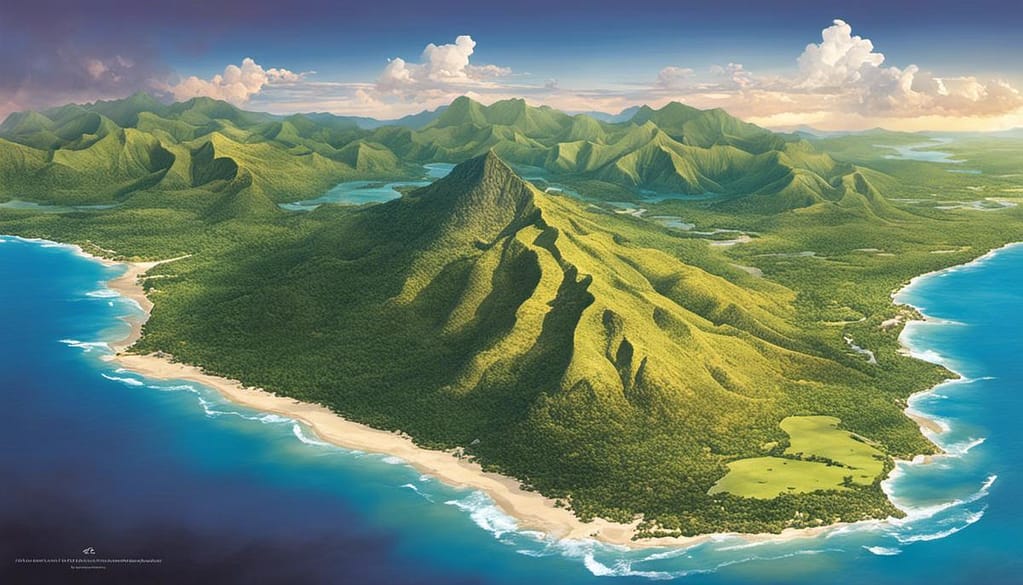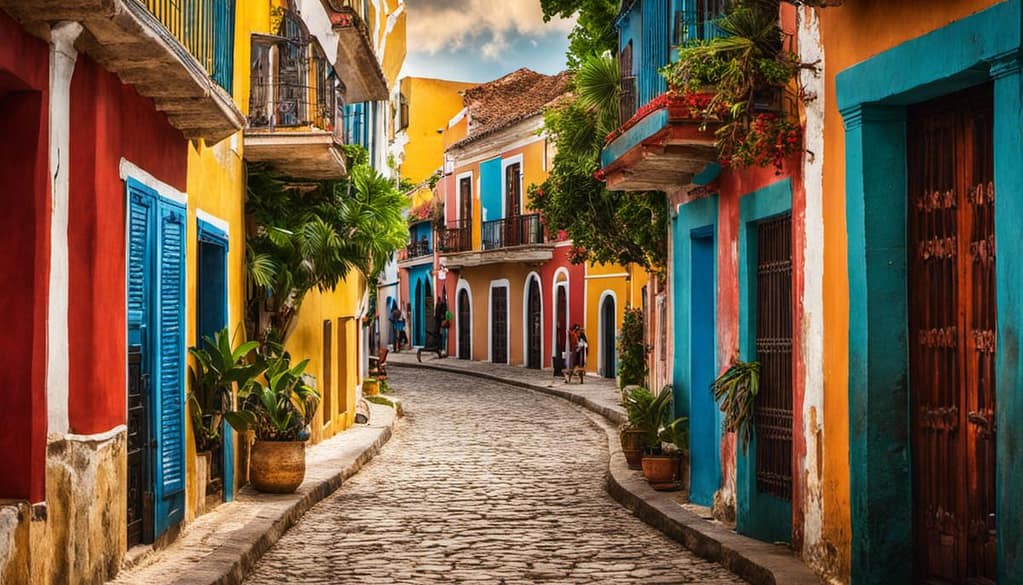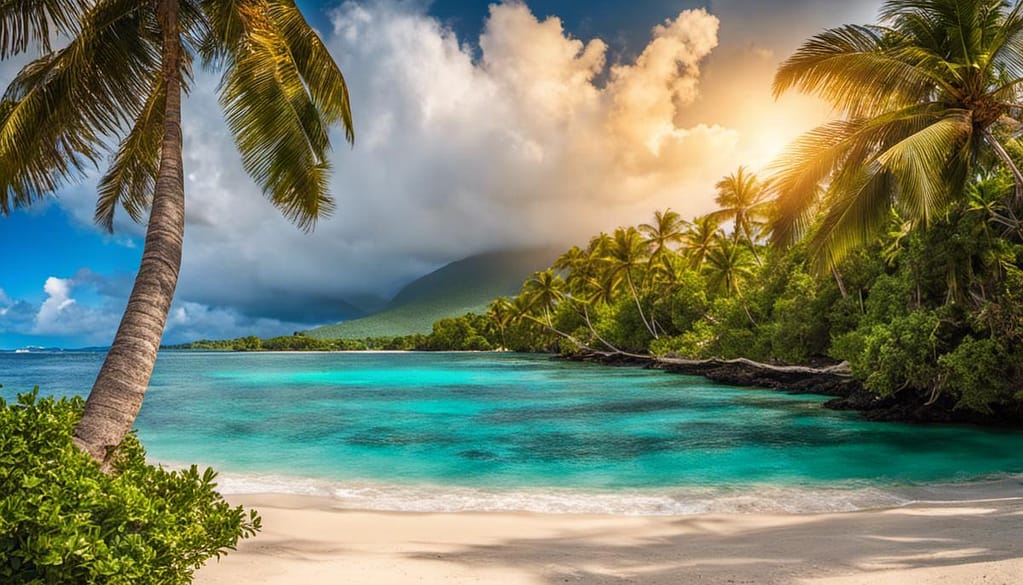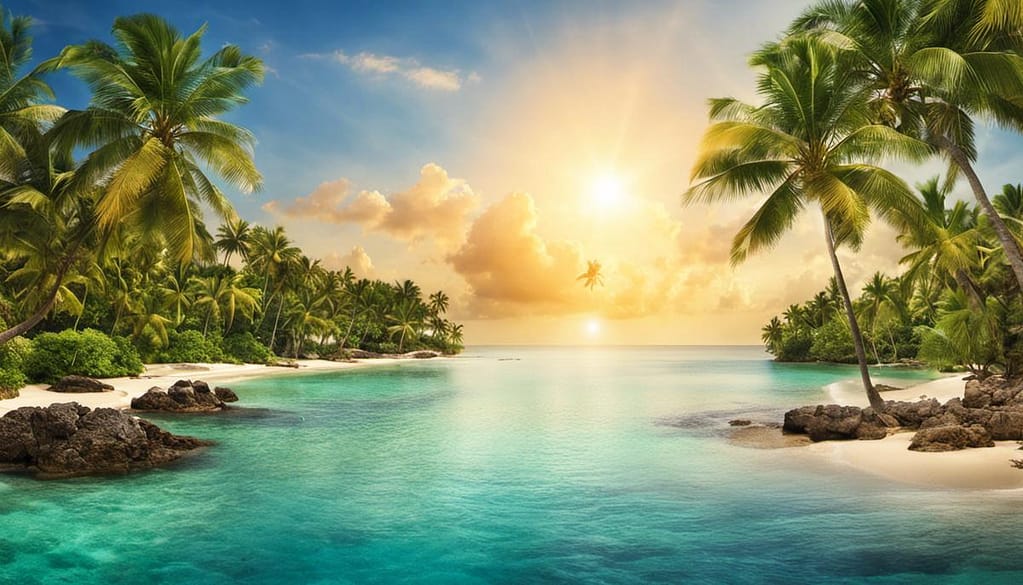Often renowned for its stupefying tropical landscapes and enchanting culture, the Dominican Republic offers a thoroughly enticing experience for those inclined towards exploration. The unique fusion of Taino, African, and Spanish influences create a culture that thrives vibrantly across the span of the island. Whether it’s patriotism manifested in their music and art, the deeply-rooted history embodied within the city walls, or the pristine sights and sounds that lull you into a sweet serenity, the Dominican Republic leaves an indelible mark on the hearts of those who visit. This guide embarks on a voyage to explore this Caribbean gem in detail, painting a comprehensive picture of the Dominican Republic, from its beguiling geography and climate to its diverse cultural fabric, tourist attractions, practical travel information, and essential health and safety tips.
Understanding the Dominican Republic: Geography and Climate
Dominican Republic: Geography
The Dominican Republic shares the island of Hispaniola with Haiti and sits on the eastern two-thirds of the island, making it the second-largest country in the Caribbean. This geographic uniqueness contributes to the nation’s diverse topography which ranges from coastal plains to towering mountains.
The country’s terrain is characterised by four major mountain ranges interspersed with fertile valleys, with the Cordillera Central being the most notable of these. The Cordillera Central skirts the Haitian border and houses Pico Duarte, the highest peak in all of the West Indies.
There are numerous other geographical highlights too. One of them is Lake Enriquillo, the Caribbean’s largest lake and lowest point. Surrounded by arid land, the lake’s salinity is three times greater than the sea and it is home to exotic wildlife including American crocodiles and flamingos.
Several rivers crisscross the landscape of the Dominican Republic, with the most significant being the Yaque Del Norte, which is critical for the nation’s agriculture. Other rivers like the Ozama contribute to the hydrography but also enhance the scenic beauty.
Dominican Republic: Cities and Regions
The Dominican Republic is divided into 31 provinces, with Santo Domingo de Guzman being the capital and the oldest city in the New World. With its cobblestone streets and colonial architecture, Santo Domingo is a must-visit.
Other vital cities include Santiago de los Caballeros, a dynamically developing urban centre and Puerto Plata, the hub of the country’s thriving tourism industry. Punta Cana and Bavaro area, located on the easternmost tip, draw a plethora of tourists each year, owing to their immaculate beaches and luxury resorts.
Dominican Republic: Climate
The Dominican Republic experiences a tropical rainforest climate marked by high temperatures throughout the year. The average annual temperature hovers around 25°C, with coastal regions being warmer compared to the highlands.
The climate can be divided into two seasons: the “rainy” season from May to November, and the “dry” season from December to April. However, rainfall can occur any time of the year, and the amount can vary drastically from one region to another.
Optimal Travel Period and Packing Essentials
Thanks to its tropic climate, any time of the year is suitable for a trip to the Dominican Republic. Yet, the optimum time, perhaps, is during the dry season, from December through to April, when the weather is at its kindest with minimal rain. This coincides with the peak tourism season in the country.
When it comes to packing for the Dominican Republic, prioritise comfort over style. Lightweight, breathable attire will be your best companion. Pack swimwear, beach-appropriate clothing, short-sleeved tops and shorts. Essential items includes a wide-brimmed hat, sunglasses, and a copious amount of sunscreen to shield you from the intense Caribbean sun. A light rain jacket might come in handy during the rainy months or for trips to the highlands, where the weather may be cooler.

Rich Culture and History of the Dominican Republic
A Glimpse into Its Rich Culture and History: The Pre-colonial Era
Before the Spanish set foot in the late 15th century, the Dominican Republic was home to the Taíno, an Arawak tribe. The Taínos left behind complex ball-game courts, intricate rock art, and stone and wood sculptures that offer an insight into their culture. These are preserved and displayed in various museums across the nation, providing a fascinating look into the country’s pre-colonial past.
European Influence on Dominican Republic
It became the site of the first permanent European settlement in the Americas, when Christopher Columbus landed on the island during his first voyage in 1492. It was under the Spanish rule for several centuries before gaining independence in 1844. The centuries of Spanish rule have left an indelible mark on the country’s architecture, particularly in the capital, Santo Domingo.
The Old Town, Zona Colonial, is a UNESCO World Heritage site that boasts Spanish colonial buildings dating back to the 16th century. Some key attractions here include the first cathedral in the Americas, Cathedral of Santa Maria la Menor, and the Alcazar de Colon, the former palace of Diego Columbus, Christopher Columbus’s son.
Afro-Dominican Influence
The arrival of African slaves to the Spanish colony further enriched the Dominican culture. The Afro-Dominican culture is still prominent today, especially in music and dance forms such as merengue, bachata, and son, which are intrinsic to the festive spirit of the Dominican Republic.
The African culinary impact can be best tasted in dishes like sancocho, a hearty stew, and mangu, a mashed plantain dish, both staples in the country.
Modern Dominican Republic
Modern Dominican Republic is a fusion of these influences, creating a vibrant and rich culture that is unique in the Caribbean. The people of the Republic are known for their warm hospitality, a quality that coupled with the country’s natural beauty from verdant mountains to idyllic beaches, make it a widely favoured tourist destination.
Culture and tradition are deeply rooted here, with annual celebrations such as the colourful Carnaval Dominicano in February, featuring parades, music, dancing, and traditional costume, exhibiting the energy and zeal of the locals.
Artistic and Literary Scene in Dominican Republic
Dominican Republic has a flourishing art scene where vibrant paintings capture the beautiful local scenery and embody native themes. The country’s literature arena also stands out, gracefully storytelling the rich Dominican life. International renowned authors like Julia Alvarez and Junot Díaz hail from here.
In conclusion, Dominican Republic’s cultural heritage and history present a fascinating mosaic, inspired by several influences, from indigenous Taíno roots, Spanish colonisation, and African Slavery. All these facets come together, creating a unique vibrancy in the modern era. A trip to the Dominican Republic truly offers an engaging, diversified cultural journey.

Exploring Tourism: Top Attraction Sites in the Dominican Republic
The Charm of Santo Domingo
Santo Domingo, the vibrant capital of the Dominican Republic, boasts a rich historical narrative. It is home to the ‘Zona Colonial’, a UNESCO World Heritage Site, adorned with 16th-century buildings standing tall in their well-preserved glory. The iconic Catedral Primada de América, the oldest existing cathedral in the Americas, is among them. For a modest fee of DOP100 (around $2), you can explore its grand interiors. Not far from here is the delightful Parque Colon, a perfect spot to unwind and perhaps engage in a game of dominoes.
Punta Cana
Punta Cana boasts some of the most beautiful beaches in the Dominican Republic, with powdery white sands and crystal clear waters. It’s also home to several luxe all-inclusive resorts, catering to everyone from couples seeking romance to families travelling with kids. Punta Cana also offers various water activities such as snorkelling, diving, and kayaking. The prices for these can hugely vary, so it’s advisable to check with your resort or a travel agency.
Jarabacoa
For those seeking adventure, the mountainous region of Jarabacoa is a must-visit. Jarabacoa is considered the country’s eco-tourism capital, offering white-water rafting, hiking, and horseback riding – particularly within the confines of the Jimenoa Falls and the Baiguate Waterfall. A trip to Pico Duarte, the highest peak in the Caribbean, is also recommended. A guide is required for this trip, with prices starting from $200 per person.
Los Haitises National Park
Los Haitises National Park, situated near the Samaná Peninsula, is a natural paradise with its mangrove forests, Taino cave drawings, and a large variety of bird species. A boat tour through the mangroves provides insight into the area’s unique ecosystem. The cost of these tours varies depending on the provider, but they usually start around $50.
Samana Bay
Samana Bay is one of the best spots for whale-watching, particularly between January and March when humpback whales come to breed. The ticket price for a whale-watching tour is around $50. Saint Bavo Bay is also worth exploring, with its serene beaches and opportunities for snorkelling and diving.
Historical Landmarks
Historic sites worth visiting include the Alcázar de Colón, a colonial-era palace in Santo Domingo, and the Fortaleza Ozama, a 16th-century fortress providing panoramic views of the city. Entry to these landmarks typically costs under $5.
Top Suggestions
Regardless of your destination within the country, it’s advisable to keep some Dominican Peso, the local currency, handy. It’s also important to respect the local custom of bartering prevalent in the Dominican markets. In fact, not bartering is considered unsociable, so don’t hesitate to negotiate a favourable price. Remember, sunscreen and insect repellent are essential!

Practical Information: Transportation and Accommodation
Journeying to the Dominican Republic
Accessing the Dominican Republic typically involves a flight. The country boasts eight international airports, offering a multitude of entry points, although the majority of travellers will alight at Punta Cana International Airport. Notable airlines such as JetBlue, Southwest, American, and Delta run regular routes to this tropical haven from significant cities worldwide.
It’s crucial to be cognisant of the $10 tourist fee levied up on your arrival, seldom included in your flight fare. This can be settled in dollars, or the national currency, the Dominican Peso.
Car Rentals
Car rentals are readily available at airports and major towns, and firms include international names like Alamo, Avis, Hertz and local companies. However, for visitors unfamiliar with Dominican Republic driving conditions, car rental may not be the wisest option. Local driving standards can be haphazard and chaotic; the country has one of the world’s highest traffic death rates.
If you choose to hire a vehicle, remember that you drive on the right side, seatbelts are compulsory, and you should always be carrying a valid driver’s licence. Most rental firms require drivers to be at least 25 years old.
Public Transportation
Dominican Republic’s public transport network is extensive, but it can be chaotic and overwhelming at first. Buses, called guaguas, are the most widespread form of transport. They are cheap, though often crowded and without set schedules. Other options are carros publicos (shared taxis) or motoconchos (motorcycle taxis), but remember that these can be less safe, particularly motoconchos.
For intercity travel, consider the reliable and comfortable coach services. These are often air-conditioned, quite punctual, and surprisingly affordable.
Accommodation in the Dominican Republic
You’ll find that there’s accommodation for every budget in Dominican Republic. From luxurious all-inclusive resorts in Punta Cana to budget-friendly guesthouses in Santo Domingo, the range is vast.
All-inclusive resorts provide food, drink, and activities in the prepaid package. They are ideal for those wanting a hassle-free holiday, and the Eastern region, particularly Punta Cana and Bavaro, is known for these resorts.
If all-inclusive isn’t your style, there are also plenty of mid-range hotels and small boutique options. These provide a more Dominican feel and often give insights into local culture and customs. Santo Domingo and Puerto Plata have many of these types of accommodation, with characterful architecture and vibrant local scenes.
Budget travellers can find hostels, budget guesthouses termed as ‘pensiones’, and small hotels that provide decent stay without straining the wallet. Some pensiones may not have English-speaking staff, so a bit of Spanish could come in handy.
Always check the amenities offered, location, and previous guest reviews before booking your accommodation. It also pays to compare prices across different platforms to ensure you are getting the best rate.
Practical Tips for Planning Your Budget
The Dominican Republic may be reminiscent of an island utopia, but on the bright side, it’s a particularly cost-effective holiday spot. Nevertheless, your expenditure can fluctuate considerably depending on your choice of accommodation, dining, and chosen activities.
High-end travellers residing in all-inclusive resorts should anticipate costs in the region of $200 per individual each night. For those preferring mid-range accommodation and eating, predicting a daily spend between $100-$150 is reasonable, while more frugal travellers could manage to spend just $30-$50 per day.
It’s quite feasible to explore the Dominican Republic on a modest budget. But bear in mind that by being willing to spend slightly more, the overall quality of your holiday – the experiences, amenities, and memories – can be significantly improved. Equally, don’t overlook costs for expeditions, tips, and keepsake purchases.
Lastly, keeping some Dominican Pesos within easy reach is highly recommended for smaller transactions, as it’s not uncommon for cards to be declined, particularly in more rural towns and villages.

Staying Safe and Healthy in the Dominican Republic
The Relevance of Health Insurance
Securing adequate health insurance is a critical component of arranging safe and hassle-free travel to the Dominican Republic. For comprehensive protection, it’s advised to select a policy that covers emergency evacuation alongside any healthcare treatments you may need whilst overseas. Do consider that the Dominican Republic might not be equipped to manage specific health conditions, and in severe incidents, it may be necessary to transport patients to a more suitable medical facility in another country.
Vaccinations Needed
Before travelling to the Dominican Republic, it’s essential to ensure your routine vaccinations are up-to-date, including measles-mumps-rubella (MMR), diphtheria-tetanus-pertussis, varicella (chickenpox), polio, and your yearly flu shot. Hepatitis A and Typhoid vaccines are also recommended because you may get these diseases through contaminated food or water. Note that the Yellow Fever vaccine is not required for entry into the Dominican Republic, but it is advised if you are travelling from a country with risk of Yellow Fever transmission.
Local Health Hazards
When it comes to local health hazards in the Dominican Republic, dengue fever and chikungunya are two prevalent diseases transmitted by mosquitoes. The use of repellents, wearing protective clothing, and sleeping under a mosquito net should be followed to minimise the risk. Furthermore, there’s also a risk of Zika virus transmission in this Caribbean island, hence, pregnant women or women planning pregnancy are advised caution.
Tips to Stay Safe from Crime
While the Dominican Republic is generally considered safe for tourists, like any destination, crime can pose a threat. Avoid flashing expensive items, carry only the cash you need, and use hotel safes for valuables. Always be vigilant and aware of your surroundings, be cautious while using public transport and avoid travelling to isolated areas, especially at night.
Safety from Natural Disasters
The Dominican Republic is vulnerable to hurricanes, especially between June and November. It’s recommended to monitor weather updates and follow the advice and evacuation orders of the local authorities. In case of earthquakes, familiarise yourself with safety measures like drop, cover, and hold on.
Other Potential Threats
Apart from these, it’s important to be cautious with food and water to avoid food-borne illnesses. Drink only bottled water, avoid undercooked or raw food, especially seafood and salads. Be aware of the local laws and customs to avoid potential legal trouble.
In conclusion, staying safe and healthy in the Dominican Republic involves being prepared, vigilant, and informed at all times. By taking necessary precautions and following the recommended guidelines, travellers can ensure a safe and memorable trip.

Immersed in majestic natural beauty and brimming with an exuberant cultural diversity, the Dominican Republic provides a paradise-like experience for every traveller. It presents you with a veritable symphony of experiences that swing pendulum-like between the past and the future, between relaxation and adventure. Whether you are treading the cobbled streets of ancient cities echoing with history, soaking in the refreshing vista of tropical beaches, or navigating the vibrant local markets permeated with the tantalising aroma of delicious cuisine, the Dominican Republic truly captivates and leaves you in awe of its extraordinary allure. A journey to this stunning island country provides a detailed encounter with an eclectic mix of experiences that forever keeps the memory of your travel alive.

